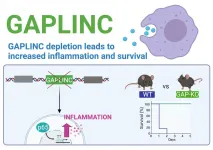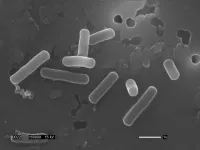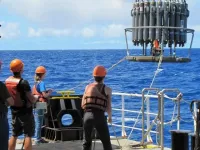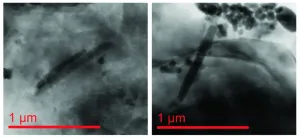Mathematical method developed to predict cancer and drug-specific immunotherapy efficacy
Houston Methodist and MD Anderson researchers collaborated on study in Nature Biomedical Engineering
2021-02-02
(Press-News.org) HOUSTON-(Feb. 1, 2021) - Houston Methodist researchers have developed a mathematical model to predict how specific cancers will respond to immunotherapy treatments, thus enhancing chances for successful treatments from a wide variety of cancer-immunotherapy drug combinations. The results were published last month in Nature Biomedical Engineering in collaboration with researchers at MD Anderson Cancer Center.
Immunotherapy activates patients' immune systems to recognize and attack their cancers, leading to higher, more targeted kill rates and fewer side effects than chemotherapy, radiation and other therapies. While this technology is a significant advance in fighting cancer, it works only with some cancer types, and only in a subset of patients with these cancers.
The mathematical model uses a system of mathematical equations based on laws of physics and chemistry to describe the complex biological systems involved in immunotherapy treatment and the associated immune response. Often, the important players or processes involved in cancer therapy (for example, immune cells or drugs that penetrate into the tumor) cannot be measured in patients. Mathematical modeling overcomes this limitation by discovering ways these can be calculated from other quantities that can be measured. Houston Methodist's Dr. Zhihui Wang and Dr. Vittorio Cristini and colleagues have designed this model to predict the strength of immune response using only inputs that are already measured in cancer patients. The model establishes a framework for engineering individual treatment strategies in a step toward the future of personalized medicine.
To test their model's ability to accurately and reliably characterize the specific strength of a cancer type to a specific immunotherapy treatment, they obtained CT or MRI scan data of tumors from before, during and after immunotherapy in 124 patients treated with checkpoint inhibitor immunotherapy in one of four in-house clinical trials. These were then analyzed using the model to obtain specific numeric measures of the therapeutic response. They found that two model-derived measures that quantify (1) the presence and health of the immune presence within the tumor and (2) the resulting kill rate of cancer cells by immunotherapy-activated immune cells were able to be combined into a single measure that was highly correlated with long-term tumor burden, thus providing a unique numerical score of the strength of response of that cancer to the specific drug. These results were further validated with data from 177 additional patients treated with one of the most common checkpoint inhibitor immunotherapies (anti-CTLA4 or anti-PD1/PDL1 monotherapies).
The mathematical model can be immediately implemented in the clinic, without the need for new technology, personnel or extensive training. Furthermore, methods to use other clinical measures to improve the accuracy and precision of model-based predictions, such as data from blood samples or tumor biopsies, are currently under investigation.
This collaborative effort between researchers and clinicians at Houston Methodist and MD Anderson Cancer Center is ongoing, with the long-term goal of clinical translation of this predictive model. MD Anderson collaborators include: Dr. James Welsh; Dr. Eugene J. Koay; Dr. Caroline Chung; and Dr. David S. Hong.
INFORMATION:
ELSE PRESS RELEASES FROM THIS DATE:
2021-02-02
Oak Brook, IL - The February edition of SLAS Discovery is a Special Issue on Hit Discovery Methodologies edited by Mark Wigglesworth, Ph.D., (Medicines Discovery Catapult, Stockport, EN, UK) and Peter Hodder, Ph.D. (Amgen, Thousand Oaks, CA, USA).
The focus of this Special Issue is to highlight the use of hit discovery methodologies and technologies and their usage in both small molecule and large molecule drug discovery. The February issue exemplifies how technologies, both new and existing, have been applied successfully to find hits.
Additionally, the issue houses a list of the most downloaded articles from SLAS journals, many of which ...
2021-02-02
Las Vegas, Nev. (Monday, Feb. 1, 2021) - In the summer of 2019, Desert Research Institute (DRI) scientist Rosemary Carroll, Ph.D., waited for the arrival of the North American Monsoon, which normally brings a needed dose of summer moisture to the area where she lives in Crested Butte, Colo. - but for the fourth year in a row, the rains never really came.
"2019 had just a horrendous monsoon," Carroll said. "Just the weakest monsoon. And we'd had a few years of weak monsoons before that, which had really gotten me wondering, how important is the monsoon to late summer streamflow here in the Upper Colorado River basin? And how do monsoons influence the following year's streamflow?"
Working in partnership with colleagues ...
2021-02-02
Oak Brook, IL - The February edition of SLAS Technology is a special collection of articles focused on "Artificial Intelligence in Process Automation" by Guest Editor Cenk Ündey, Ph.D. (Amgen, Thousand Oaks, CA, USA).
This SLAS Technology special collection targets the use of artificial intelligence (AI) techniques and technologies as applied specifically to drug discovery, automated gene editing and machine learning. As AI becomes increasingly more prevalent in research, medicine and even everyday life, laboratory automation has gone beyond hardware advancements toward new levels ...
2021-02-01
Risk for a severe form of retinopathy of prematurity, which can cause blindness in extremely premature babies, was halved when the newborns were given a new supplement combining various fatty acids. This was shown in a Swedish study led from the University of Gothenburg.
The study, now published in JAMA Pediatrics, is described as groundbreaking in its field. It documents a clear fall in retinopathy of prematurity (ROP) among extremely premature (EP) infants (born before 28 weeks' gestation), whose retinal blood vessels are not fully developed. The condition can cause ...
2021-02-01
When the body's immune response to an infection gets out of control, the result can be sepsis, a life-threatening condition in which an overwhelming inflammatory response can lead rapidly to failure of multiple organs and death.
In a new study, researchers at UC Santa Cruz have identified a long noncoding RNA (lncRNA) molecule that regulates the expression of pro-inflammatory genes in immune system cells called macrophages and affects the susceptibility of mice to septic shock.
This lncRNA, called GAPLINC, was previously studied for its role in cancer, but it turns out to be the most highly expressed lncRNA in macrophages, which play a central role in inflammation. ...
2021-02-01
A previously unknown root trait allows some cereal plants to grow deeper roots capable of punching through dry, hard, compacted soils, according to Penn State researchers, who suggest that harnessing the inherited characteristic could lead to crops better able to deal with a changing climate.
"This discovery bodes well for American and global agriculture because the trait helps corn, wheat and barley grow deeper roots, which is important for drought tolerance, nitrogen efficiency and carbon sequestration," said Jonathan Lynch, distinguished professor in plant science. "Breeding for this trait should be helpful in developing new crops for climate mitigation."
Called multiseriate cortical sclerenchyma by the researchers -- or MCS -- the phenotype is ...
2021-02-01
New research from North Carolina State University reveals that probiotic Lactobacillus bacteria use enzymes situationally to manipulate bile acids and promote their own survival in the gut. These findings further elucidate the complicated relationship between bile acids and gut bacteria and could eventually enable researchers to design lactobacilli with therapeutic properties, thereby engineering a healthier human gut environment.
Bile acids are key players in digestion and overall gut health. Produced in the liver and released after we eat, these acids not ...
2021-02-01
Just as plants and animals on land are keenly attuned to the hours of sunlight in the day, life in the oceans follows the rhythms of the day, the seasons and even the moon. A University of Washington study finds the biological light switches that make this possible.
Single-celled organisms in the open ocean use a diverse array of genetic tools to detect light, even in tiny amounts, and respond, according to a study published Feb. 1 in the Proceedings of the National Academy of Sciences.
"If you look in the ocean environment, all these different organisms have this day-night cycle. They are very in tune with each other, even as they get moved around. How do they know when it's day? How do they know when it's night?" said lead ...
2021-02-01
There are fossils, found in ancient marine sediments and made up of no more than a few magnetic nanoparticles, that can tell us a whole lot about the climate of the past, especially episodes of abrupt global warming. Now, researchers including doctoral student Courtney Wagner and associate professor Peter Lippert from the University of Utah, have found a way to glean the valuable information in those fossils without having to crush the scarce samples into a fine powder. Their results are published in Proceedings of the National Academy of Sciences.
"It's so fun to be a part of a discovery like this, something that can be used ...
2021-02-01
Most snakes get from A to B by bending their bodies into S-shapes and slithering forward headfirst. A few species, however -- found in the deserts of North America, Africa and the Middle East -- have an odder way of getting around. Known as "sidewinders," these snakes lead with their mid-sections instead of their heads, slinking sideways across loose sand.
Scientists took a microscopic look at the skin of sidewinders to see if it plays a role in their unique method of movement. They discovered that sidewinders' bellies are studded with tiny pits and have few, if any, of the tiny spikes found on the bellies of other snakes.
The Proceedings ...
LAST 30 PRESS RELEASES:
[Press-News.org] Mathematical method developed to predict cancer and drug-specific immunotherapy efficacy
Houston Methodist and MD Anderson researchers collaborated on study in Nature Biomedical Engineering







